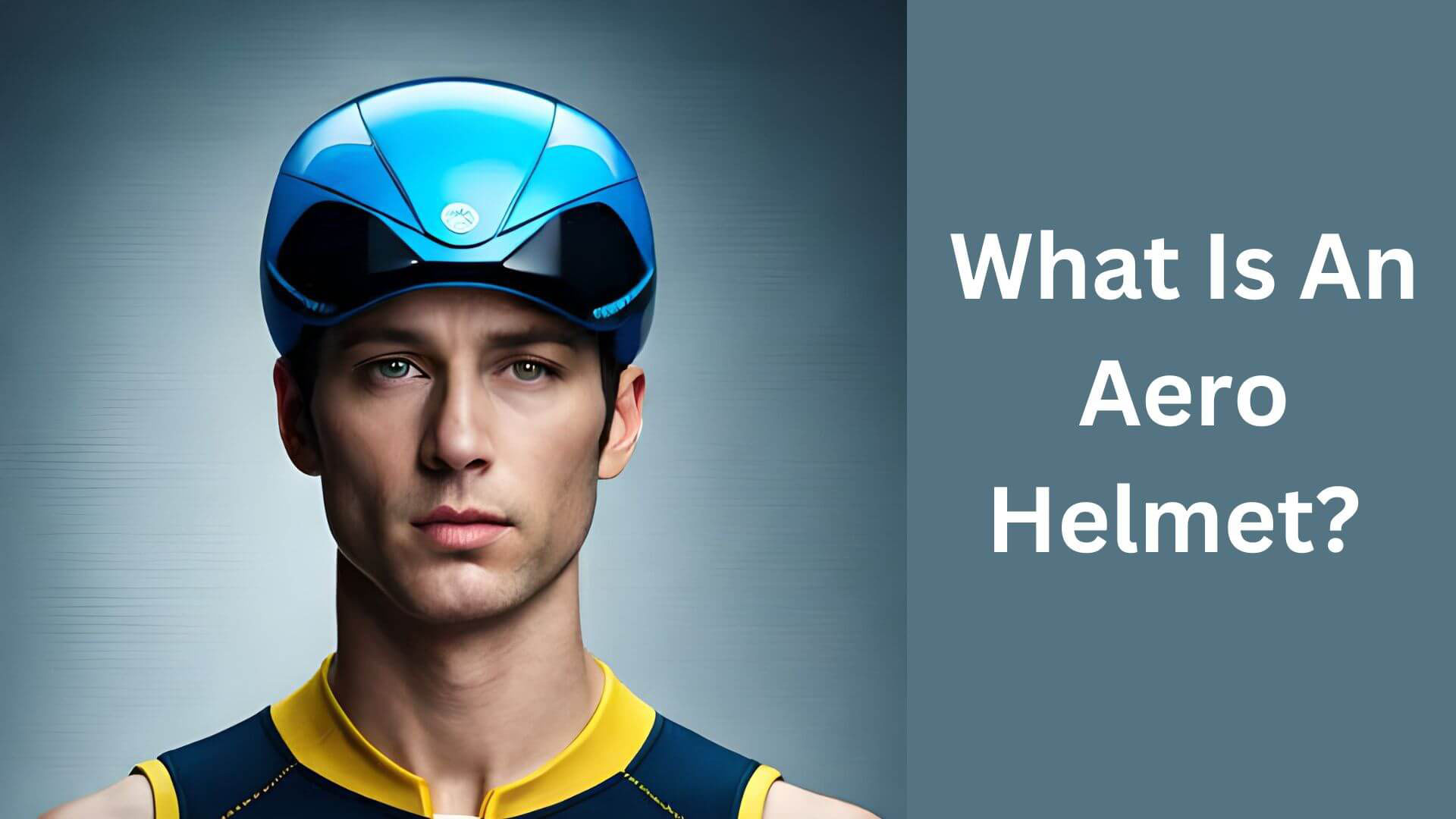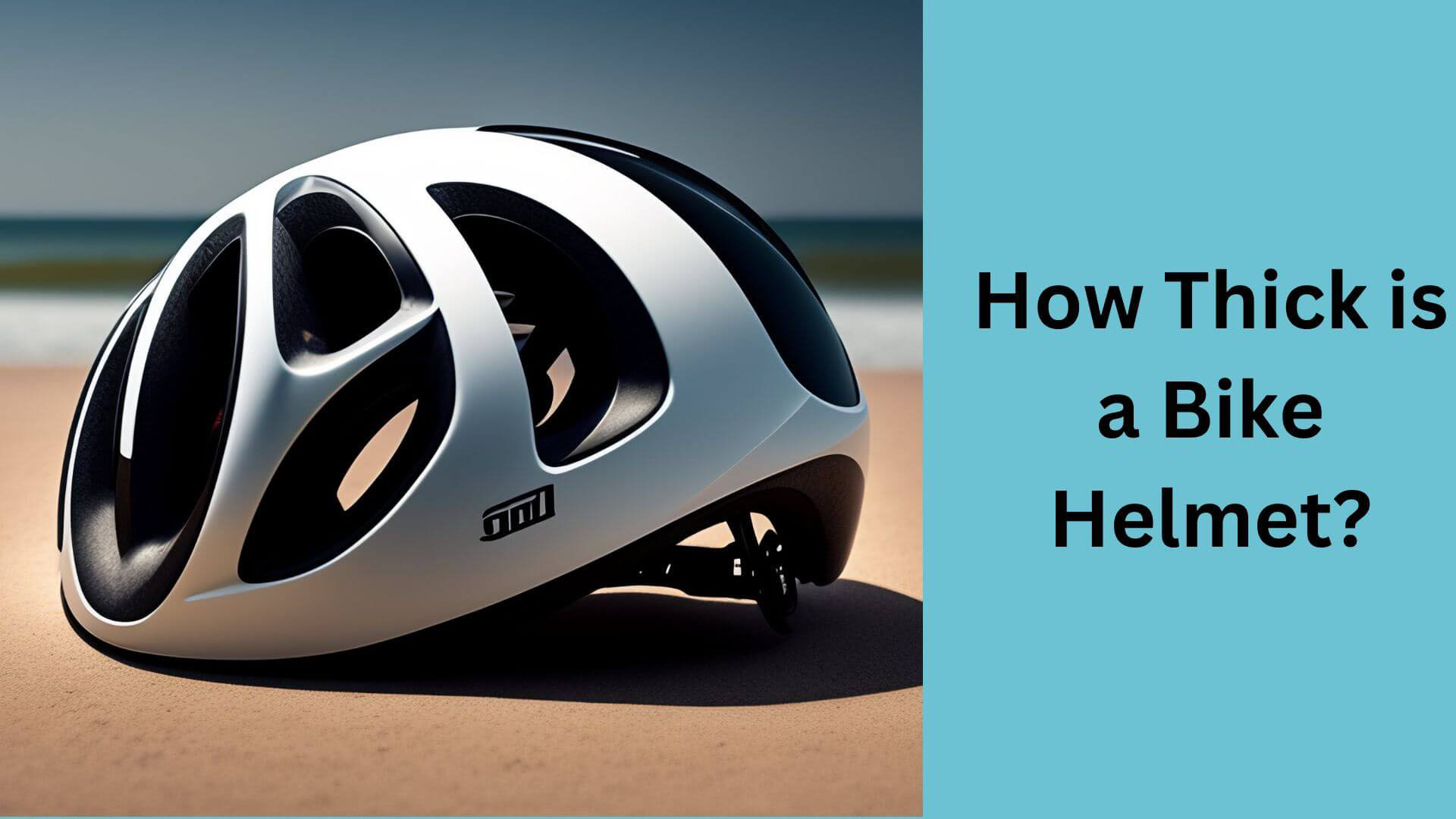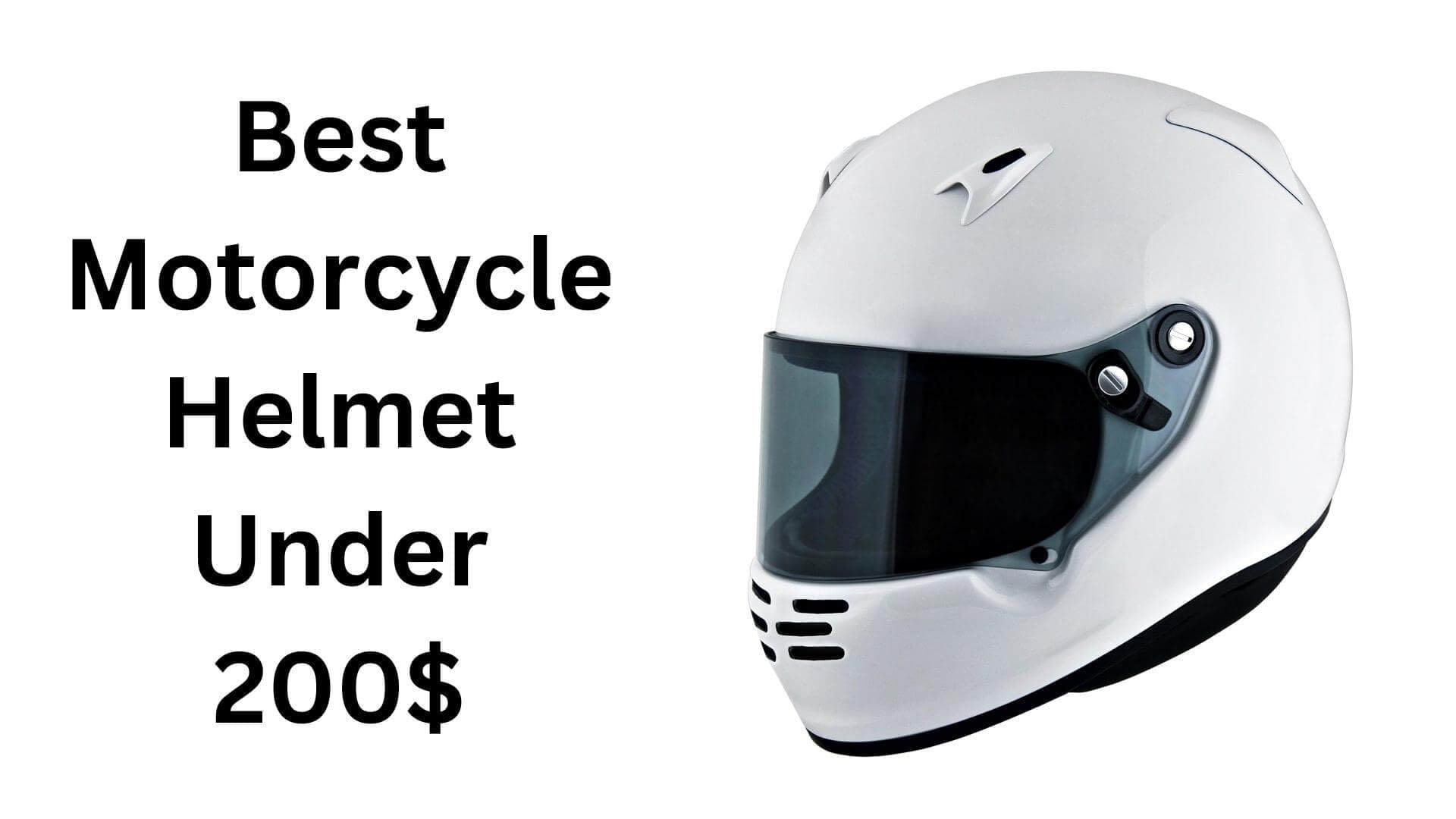What Is An Aero Helmet? The Benefits and Features of a Lightweight Helmet

Are you a cyclist or triathlete looking for a way to boost your performance? Look no further than the aero helmet.
This sleek and aerodynamic helmet is designed to reduce drag and increase speed, making it a must-have for anyone serious about improving their time.
In this blog post, I’ll explore the benefits of an aero helmet and help you find the perfect one for your needs. So sit back, relax, and get ready to unleash your inner speed demon.
What is an Aero Helmet?
An aero helmet, also known as an aerodynamic or time trial helmet, is a specialized cycling helmet designed to reduce air resistance and improve the cyclist’s speed.
Aero helmets feature a streamlined shape and an elongated tail, which helps to reduce drag by slicing through the air more efficiently than traditional helmets.
How Does an Aero Helmet Work?
Aero helmets minimize the amount of air that hits the cyclist’s head and body, reducing drag and turbulence.
The helmet’s streamlined shape is designed to guide air smoothly over the cyclist’s head and back, reducing the drag caused by the head and shoulders.
The elongated tail of the helmet serves to smooth out the airflow and minimize turbulence, reducing drag and increasing speed.
Aero Bike Helmet Vs. Regular Bike Helmet:

There’s a table comparing aero bike helmets to regular bike helmets:
| Aero Bike Helmets | Regular Bike Helmets |
| Designed for speed and aerodynamics | Designed for general use and safety |
| Typically have a smooth, streamlined shape | It may have more varied shapes and designs |
| Often have fewer vents to reduce air resistance | Have more vents for increased ventilation |
| Tend to be more expensive due to specialized design and materials | Tend to be less costly and more widely available |
| It may have a tighter fit for improved aerodynamics | It may have a looser fit for increased comfort |
| Often worn by time trialists, triathletes, and competitive cyclists | Worn by a wide range of cyclists, from commuters to recreational riders |
| It can reduce air resistance by up to 12%, resulting in a significant increase in speed | Do not provide the same level of aerodynamic benefits |
| It may not be as comfortable or well-ventilated as regular helmets | Designed with comfort and ventilation as a top priority |
| It may not be suitable for all types of riding, depending on the level of aerodynamics required | Ideal for all types of riding, from road to mountain biking |
Read More: Is an Aero Helmet Better Than a Regular Helmet?
What are the Benefits of Using an Aero Helmet?
Aero helmets can provide several benefits to cyclists, including:
- Increased speed: Aero helmets are designed to reduce drag and improve airflow, allowing cyclists to ride faster with less effort. Studies have shown that an excellent aero helmet can reduce air resistance by up to 12%, significantly increasing speed.
- Improved endurance: With less drag, cyclists can ride long distances without getting as tired, making it easier to maintain high speeds over long periods.
- Enhanced safety: Aero helmets are designed to be more stable at high speeds, reducing the risk of accidents caused by wobbling or instability.
- Better ventilation: Although aero helmets are designed to be streamlined, they also have ventilation ports that allow air to flow through and keep the cyclist cool.
Who Should Use an Aero Helmet?

Aero helmets are most commonly used by time trialists, triathletes, and competitive cyclists looking to maximize their performance.
However, any cyclist can benefit from an aero helmet, as reducing air resistance can help cyclists ride faster and more efficiently.
Read More: Are Aero Helmets Smaller Than Regular Helmets?
How Can You Choose the Best Aero Helmet for You?

Choosing the fitting aero helmet can be overwhelming, but here are some factors to consider to help you make the best choice for your needs:
- Aerodynamics: The primary factor to consider is how aerodynamic the helmet is. Look for a helmet with a streamlined shape and elongated tail to maximize your speed.
- Comfort: Look for a helmet that is comfortable to wear and fits well. The helmet should be snug but not too tight and sit comfortably on your head without slipping or moving around.
- Ventilation: Look for a helmet with good ventilation to keep you cool and comfortable during long rides.
- Weight: A lightweight helmet can help reduce fatigue and make maintaining high speeds over long distances easier.
- Price: Aero helmets can range in price from budget-friendly to very expensive. Consider your budget and how much you’re willing to spend on a helmet.
Safety Concern Of Aero Helmet
here are some safety concerns about aero helmets:
- Reduced Impact Protection: Aero helmets may provide a different level of impact protection than regular helmets. Due to their design focus on aerodynamics, they may have less foam padding and fewer vents, which could increase the risk of head injury in a crash.
- Limited Field of Vision: Some aero helmets have a narrow visor or limited field of vision, which could impact a cyclist’s ability to see and react to obstacles or hazards on the road.
- Potential Heat Build-Up: Aero helmets have fewer vents to reduce air resistance, so they may not provide the same level of ventilation as regular helmets. This could result in heat build-up, especially during hot weather or high-intensity rides, increasing the risk of heat exhaustion or dehydration.
- Neck Strain: Some aero helmets may have a longer tail or extended rear section due to their aerodynamic design. This can strain cyclists’ necks, especially during longer rides or races.
- Risk of Neck and Spinal Injuries: The longer tail or extended rear section of some aero helmets could also increase the risk of neck and spinal injuries in a crash, especially if the helmet is not correctly fitted or adjusted.
It’s important to note that aero helmets are still designed with safety in mind, and many have passed rigorous safety tests and certifications. However, it’s always important to consider the potential safety risks and choose a helmet that provides the appropriate level of protection for your cycling needs and style.
Read More: What is MIPS Helmets Technology?
FAQs about Aero Helmets
Are aero helmets legal in all cycling races?
Yes, aero helmets are legal in all cycling races, but there may be restrictions on their use in certain events or categories. It’s always best to check with the race organizers before using an aero helmet.
Can I use an aero helmet for regular road riding?
Yes, you can use an aero helmet for regular road riding. However, remember that aero helmets are designed for speed and may need to be more comfortable and well-ventilated than standard helmets. Consider the weather conditions and the duration of your ride before using an aero helmet.
How much faster can I go with an aero helmet?
The speed increase you can expect from an aero helmet depends on several factors, including your cycling style, fitness level, and the quality of the helmet.
However, studies have shown that an excellent aero helmet can reduce air resistance by up to 12%, significantly increasing speed.
Can I wear glasses with an Aero helmet?
Yes, most aero helmets are designed to accommodate glasses, but it’s always best to try them on with your drinks before purchasing.
Some helmets may have a tighter fit, which can make it uncomfortable to wear glasses.
How do I care for my aero helmet?
To care for your aero helmet, wipe it down with a damp cloth after each use to remove sweat and dirt. Store your helmet in a cool, dry place, away from direct sunlight.
Final Word
In conclusion, an aero helmet is a specialized cycling helmet designed to reduce air resistance and improve a cyclist’s speed.
Aero helmets are most commonly used by time trialists, triathletes, and competitive cyclists looking to maximize their performance.
Choosing the fitting aero helmet depends on several factors, including aerodynamics, comfort, ventilation, weight, and price. Considering these factors, you can select the best aero helmet for your cycling needs and take your performance to the next level.

Hey, I’m Hrithik Hossain. I am the head of helmethacks.com, which specializes in safety helmets. I am looking to connect with anyone interested in purchasing a helmet or who has any questions about different types of helmets. I have over 8 years of experience as a helmet expert, and I can’t wait to help you find the perfect helmet for you. I can help you with any questions regarding helmets, from the best brands to fitting, style, and more! I really enjoy keeping people safe by ensuring they have the best protection possible.







